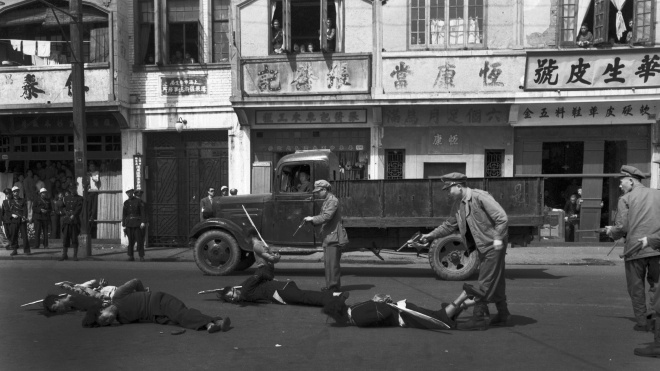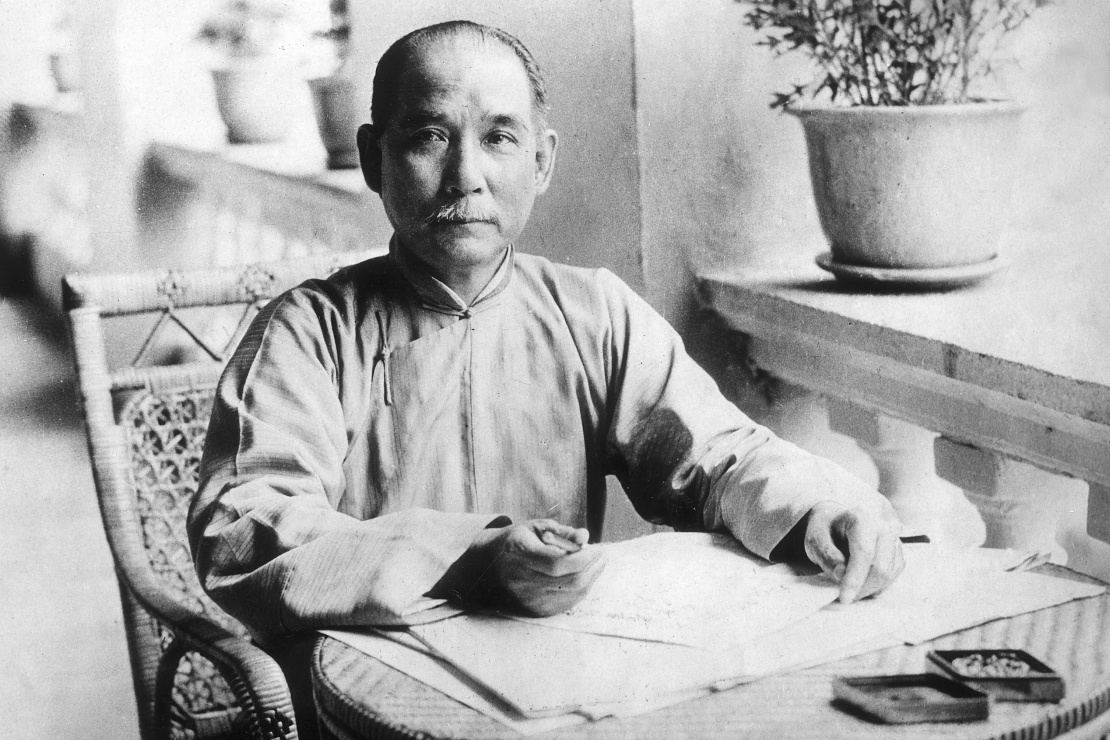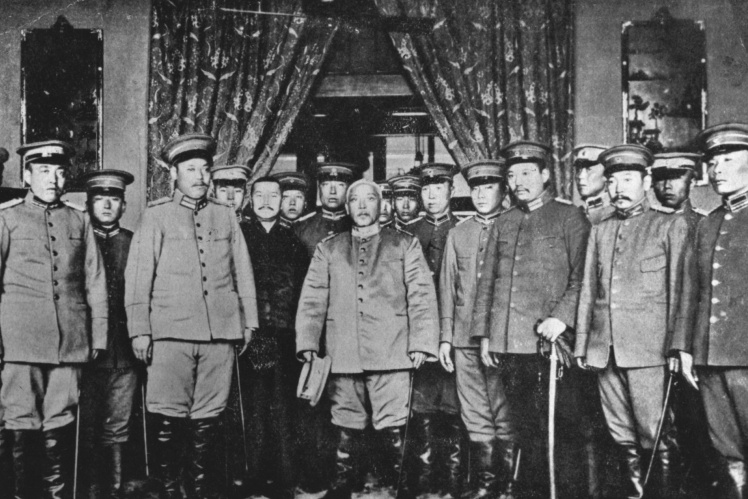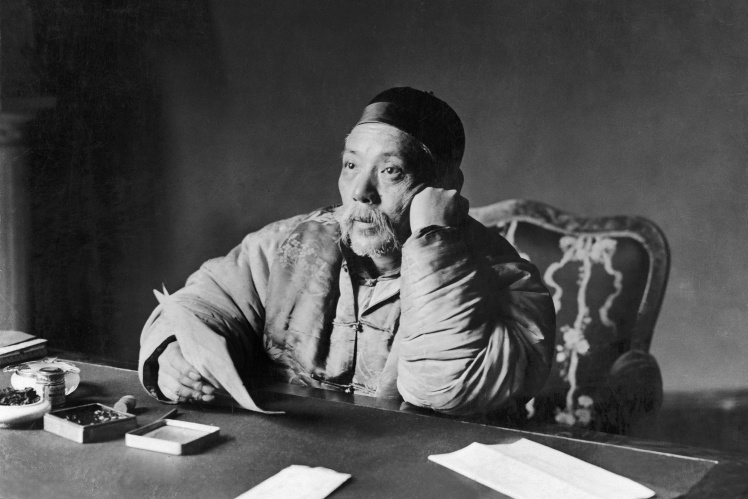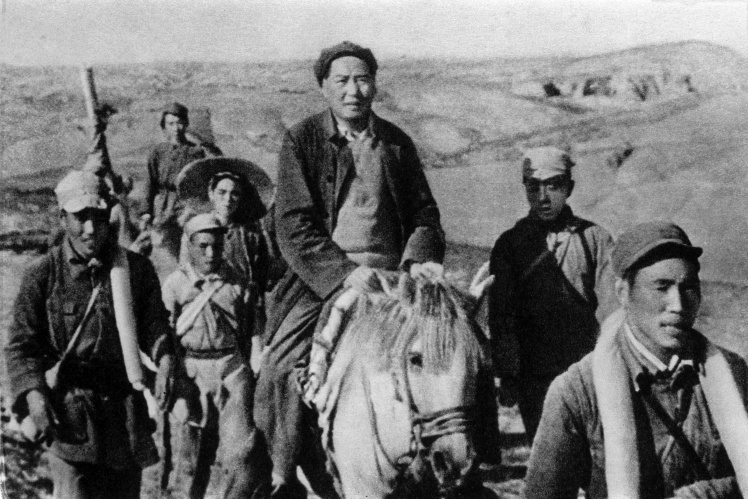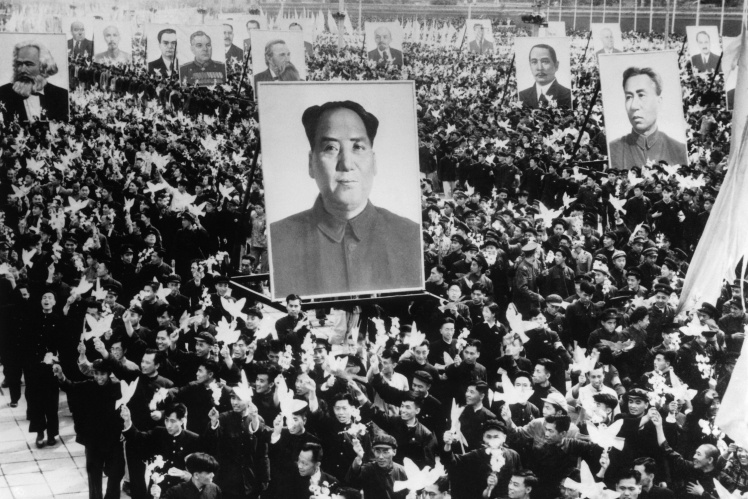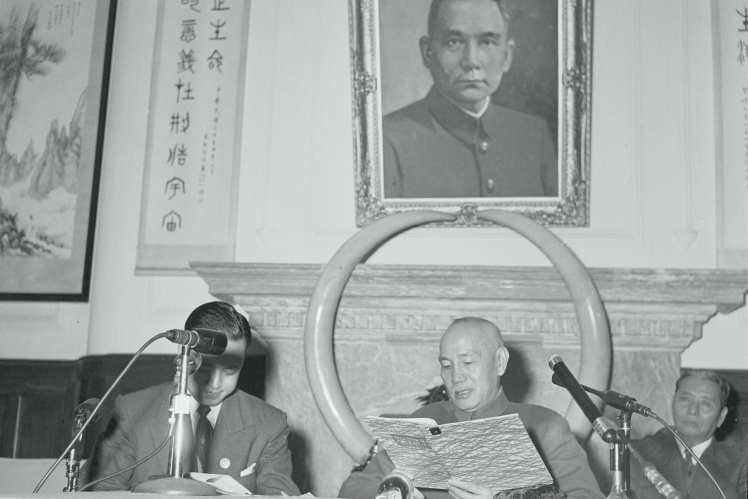At the turn of the 19th and 20th centuries, the Chinese empire under the control of the Manchurian Qing dynasty gradually declined. She lost control over Korea. The rest of its territories and resources were claimed by the Western powers — France, Great Britain, Germany, and the United States. And two of Chinaʼs neighbors, Russia and Japan, even started a war because of it.
A revolutionary movement was formed inside the country, the main ideologist of which was Sun Yat-sen. He had a higher education, and traveled a lot. He knew the English language and admired the culture, history and political traditions of Western countries. Later he even converted to Christianity. For the future of a free and strong China, Yat-sen formulated the political ideology of the "three national principles": nationalism (the preservation of the union), peopleʼs rule, and national welfare. He also put forward the idea of five branches of power for a democratic state: legislative, executive, judicial, as well as examination and control.
Sun Yat-sen at his home in Guangzhou, 1923.
Getty Images / «Babel'»
Sun Yat-sen was not only a theorist, but also a practitioner. Since the 1890s, he has organized more than ten anti-government uprisings. But they ended in defeat each time, and Yat-sen was forced to flee the country. In 1905, while in another exile in Tokyo, he created the Chinese revolutionary organization "Tongmenghui".
In September 1911, a spontaneous riot began in an artillery division in Hubei province. In October, when he was supported by a sapper battalion and two infantry regiments, the riot turned into an rebellion. Soon the protests spread to neighboring provinces and turned into a real revolution led by "Tongmenghui". Later, in the city of Nanjing, representatives of the seventeen rebel provinces declared the whole of China a republic and elected Sun Yat-sen as its provisional president.
Sun Yat-sen goes to a meeting of the Cabinet of Ministers of the Republic of China, 1911.
Getty Images / «Babel'»
The country was on the verge of a long civil war. Wanting to end it as soon as possible, Yat-sen secretly met with the commander of the imperial forces, General Yuan Shikai (who had a reputation as a liberal), and offered him the presidency of the new republic. The plan succeeded, the Qing dynasty was left without military support and in February 1912 was forced to abdicate. Thus ended the imperial period in Chinese history, which lasted from the 3rd century BC.
But Shikai turned out to be a liberal only in words. He returned the capital to Beijing (which was controlled by his troops), quickly established a dictatorial regime and began to crack down on opponents. As early as August 1912, Sun Yat-sen and his associates created the Kuomintang opposition party and tried to organize a "second revolution"— an uprising against the Shikai regime. Everything ended in failure, and Yat-sen was again forced to flee abroad.
In 1914, Shikai dissolved the parliament, and at the end of 1915 he proclaimed himself emperor. However, he ruled for only 82 days. In March 1916, Shikai, without the support of even his closest entourage, renounced the imperial title and restored the republic. He died a few months later. After that, the country was divided among themselves by military rulers, former generals of Shikai. The most powerful militarist factions were in the north of the country. They periodically made alliances with each other, fought with each other and seized power in Beijing.
Yuan Shikai (center) among his generals after his inauguration as President of the Republic of China, 1912. Yuan Shikai in the last days of his reign, 1916.
Getty Images / «Babel'»
And in the south of China, the revolutionary movement intensified again. In 1917, Sun Yat-sen returned to the country and, together with other members of the Kuomintang, formed a new republican government in the southern city of Guangzhou. Yat-sen tried to achieve international recognition. So he even declared war on Germany and its allies in World War I, hoping for the support of Great Britain, France and the USA. But Western countries did not even pay attention to it.
In 1923, the Russian Bolsheviks approached Sun Yat-sen and offered help on the condition that the Kuomintang cooperate with the young Communist Party of China. Yat-sen agreed. In the same year, Soviet advisers arrived in China, and one of Yat-senʼs confidants Chiang Kai-shek went to Moscow for military and political courses. Upon his return, he founded and headed the Whampoa Military Academy, where he trained officers for the republicʼs army.
Sun Yat-sen and Chiang Kai-shek at the Whampoa Military Academy, 1924.
Getty Images / «Babel'»
The Kuomintang and the Communist Party formed an alliance — the First United Front. With the help of Soviet military advisers, they created the National Revolutionary Army and developed a campaign plan against the northern militarists. But everything almost fell apart when Sun Yat-sen died of cancer in March 1926. The Kuomintang split into a right wing led by Chiang Kai-shek and a left wing supported by the Communists. But in 1926, at the behest of the Kremlin, the Chinese Communist Party made concessions and agreed to the appointment of Chiang Kai-shek as the commander of the National Revolutionary Army. The Soviet Union sent weapons and equipment, and in the summer of 1926 the forces of the First United Front went on a campaign to the north.
Chiang Kai-shek announces the beginning of the campaign to the north, 1926.
Getty Images / «Babel'»
In the first six months, Chiang Kai-shek managed to defeat the disunited forces of the militarists, capture Nanjing and take control of the central part of China. But at the beginning of 1927, the communists together with the left wing of the Kuomintang could not stand it. First, they established their own government in the south, in Wuhan, and in March staged a mutiny in Shanghai.
Chiang Kai-shek reacted harshly. In April, he gave a secret order to repress communists and their supporters. In Shanghai, local gangs — on the instructions of Chiang Kai-shek — staged a real massacre in which about five thousand people died. Arrests and executions of communist leaders swept through all the Kuomintang-controlled provinces of China.
Mass murders of communists in Shanghai, April 1927.
Getty Images / «Babel'»
After that, Chiang Kai-shek resumed his march to the north. In the summer, he captured Beijing and announced the restoration of the Republic of China under the leadership of the Kuomintang. But Chiang symbolically moved the capital to Nanjing, where the republic was proclaimed in 1911. After the unification of China by force, according to Sun Yat-senʼs teaching, the stage of "political guardianship" for the formation of a democratic society was to come.
In fact, Chiang Kai-shek was unable to finally defeat either the militarists in the north or the communists in the southwest. In 1931, a new problem was added — Japan seized Chinese Manchuria in the north and formed a puppet state there. And the League of Nations, created after the First World War to maintain peace in the world, could not force Japan to stop aggression.
Chiang Kai-shek himself preferred to make concessions to the Japanese in order to be able to destroy his recent allies, the Chinese Communists. And he almost succeeded. In October 1934, the communist forces found themselves surrounded in the southwestern regions and were forced to fight their way northward. This retreat lasted until November 1935 and entered the history of communist China as the "Long March". Out of about 100 000 people who started it, about 8 000-10 000 reached the final destination. However, during this campaign, the authority of Mao Zedong increased dramatically, and since then he has become the undisputed leader of the Communist Party. All because he changed the tactics of the campaign. He divided the army into separate groups that moved separately from each other. In this way, the communists managed to preserve at least some part of the combat-ready army.
Mao Zedong during the Long March, 1935. Soldiers of the communist army who survived the Long March, 1935.
Getty Images / «Babel'»
Despite the huge losses, Mao recruited new reinforcements quite quickly. He organized a large-scale propaganda campaign and announced that the campaign was actually organized to repel the Japanese. This brought the Communists popularity among the people, and the Kuomintang, on the contrary, began to lose ground. It got to the point that Chiang Kai-shek was arrested by his own generals and forced to conclude a new alliance with the Communists to fight together against Japan.
The new union turned out to be even less reliable than the previous one. Both armies acted uncoordinated and often attacked each other. When Japan launched a full-scale invasion of China in the summer of 1937, the nationalist-communist alliance had little to oppose it. As early as December 1937, the Japanese captured the capital Nanjing and staged a massacre there. China was saved from complete defeat by the fact that in 1941 the Japanese attacked the American base at Pearl Harbor and gained a more powerful enemy.
Newsreel of the Japanese invasion of China in 1937.
Getty Images / «Babel'»
Against this background, Maoʼs guerrilla tactics against the Japanese seemed more effective. Whereas Chiang Kai-shek failed to cope with his task of "protecting the nation" and suffered one defeat after another in direct battles with Japanese troops. In addition, his regime increasingly turned into authoritarianism: a one-party system, centralization of power, brutal persecution of opponents, and eventually the emergence of a cult of personality (first Sun Yat-sen as the "father of the nation", and later Chiang Kai-shek himself).
Instead, most of the real reforms, especially for the peasants, remained on paper. The Kuomintang rulers were bad managers. They tried to curb hyperinflation by simply printing money, and when that didnʼt help, they started taking away peopleʼs gold, silver, and other jewelry. But they turned out to be very skilled corrupters. Subsequently, American President Harry Truman called the leadership of the Kuomintang "thieves and scoundrels" who embezzled about $750 million in American aid.
After the end of the World War II, the Republic of China found itself on the side of the winners and received significant help from the Western allies, especially from the United States. It returned the territories captured by Japan, even the island of Taiwan, which came under Japanese control at the end of the 19th century. The Americans tried to reconcile the local nationalists and communists and at the end of August 1945 organized talks between Chiang Kai-shek and Mao Zedong. In January 1946, they signed a peace agreement. Although in practice neither was going to abide by it, especially the leader of the Kuomintang.
Mao Zedong (left) and Chiang Kai-shek at a banquet during the negotiations, 1945.
Getty Images / «Babel'»
At that time, Chiang Kai-shek seemed to have all the trump cards in his hands. The Kuomintang army was almost three times larger and better equipped. In addition, Chiang Kai-shek signed a friendship treaty with the Soviet Union, according to which the USSR undertook not to interfere in Chinaʼs internal affairs.
Local clashes between the communist and nationalist troops took place even during the negotiations of their leaders. Already in the summer of 1946, Chiang Kai-shek launched a large-scale offensive. In the first year of the new civil war, the communists mostly held the defense in the north, used partisan tactics and accumulated forces. And since 1948, they themselves went on the offensive. Civilians suffered the most from the war. Only in the northwestern city of Changchun, which was besieged by the communists, about 200 000 citizens died of hunger.
Civilian refugees during the Chinese Civil War, 1949.
Getty Images / «Babel'»
It turned out that the Kuomintang army was not as capable as Chiang Kai-shek thought. The soldiers lacked motivation and, most importantly, food. They often went over to Maoʼs side not even for ideological reasons, but simply in the hope of receiving food rations. In addition, the Kremlin, despite the agreement with Chiang Kai-shek, secretly supplied weapons to the communists. The campaign of November 1948 — January 1949 was a turning point. It finally changed the balance of power in favor of the communists. In January, they took Beijing almost without a fight, and in April they entered Nanjing.
Communists in captured Chinese cities, 1949.
Getty Images / «Babel'»
By the end of 1949, the remnants of the Kuomintang forces were surrounded in the southwest. In December, Chiang Kai-shek decided to evacuate to Taiwan along with the government and parliament of the Republic of China. In total, about two million supporters of the Kuomintang moved to the island. Chiang immediately imposed martial law, which lasted 38 years and became the longest in history. All this time, Taiwan lived under the harsh dictatorship of one party, the Kuomintang, led first by Chiang Kai-shek, and then by his son. The first democratic elections were held there in the late 1980s.
On the mainland, Mao Zedong proclaimed the communist Peopleʼs Republic of China in October 1949 and planned to finish off his opponents in Taiwan the following year. And most likely he would have succeeded. Because then the Americans were already disappointed in Chiang Kai-shek. In early January, President Truman announced that the United States would not intervene in the Taiwan dispute.
But Mao, enraptured by the victory, made a strategic mistake and in 1950 intervened in the war with the Americans in Korea. Then the US changed its position dramatically and began to provide Taiwan with political, economic and, most importantly, military aid.
Participants in a Communist parade in Beijing, with a portrait of Mao Zedong in the foreground, 1955. Chiang Kai-shek, seated under a portrait of Sun Yat-sen, confirms that the United States will provide aid in the event of a communist invasion of Taiwan, 1955.
Getty Images / «Babel'»
Since then, China has essentially remained divided into two states: the Republic of China on the island of Taiwan and the communist Peopleʼs Republic of China on the mainland. Both consider themselves the only legitimate representatives of the entire Chinese nation, and the war between them formally continues to this day.
Babel remains united and independent thanks to your donations: 🔸 in hryvnia, 🔸 Buy Me a Coffee, 🔸 Patreon, 🔸 PayPal: [email protected].
